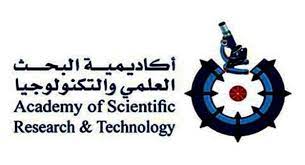Digitising type specimens, data sharing, and capacity building at Cairo University Herbarium: A Global Plants Initiative Project
Background
 The Flora of Egypt includes approximately 2200 species of plants. Many of the types for these species are found in the major herbaria in Europe or North America. Cairo University Herbarium (CAI) has approximately 94 types in its holdings. Cairo University Herbarium (CAI) would like to participate in the Plants Initiative and proposes to digitize and database the 94 types it has, and give copies of the images and database created for use in the Plants Initiative. This will facilitate research on the flora of Egypt, provide access to the information for botanists around the world, and increase opportunities for training in Egypt. We have reviewed the Intellectual Property agreement and Foreign Organization Questionnaire of the Andrew W. Mellon Foundation and will submit these as part of the proposal process.
The Flora of Egypt includes approximately 2200 species of plants. Many of the types for these species are found in the major herbaria in Europe or North America. Cairo University Herbarium (CAI) has approximately 94 types in its holdings. Cairo University Herbarium (CAI) would like to participate in the Plants Initiative and proposes to digitize and database the 94 types it has, and give copies of the images and database created for use in the Plants Initiative. This will facilitate research on the flora of Egypt, provide access to the information for botanists around the world, and increase opportunities for training in Egypt. We have reviewed the Intellectual Property agreement and Foreign Organization Questionnaire of the Andrew W. Mellon Foundation and will submit these as part of the proposal process.
The types held by Cairo University Herbarium (CAI) are 94 specimens belonging to 21 families of the flowering plants. Of these 94 specimens are for taxa described from Egypt and Arabia. Zygophyllaceae includes the highest number of types (24 type specimens), followed by Compositae, Gramineae and Leguminosae (9, 6, and 5, respectively). The rest of the families ranges between one (e.g., Najadaceae, Plumbaginaceae, Polygalaceae, Rubiaceae, Umbelliferae) and 4 (Caryophyllaceae, Geraniaceae, Liliaceae). Most of the Arabian type specimens belongs to Zygophyllaceae, especially Zygophyllum and Tribulus.
 Some additional type specimens deposited in other two well known Egyptian herbaria: the herbarium of the Agricultural Museum (CAIM) and Assiut University herbarium (ASTU) will be also included. For the latter two herbaria, no definite number of type specimens can be given. Yet, it can be noted that most of the type specimens of Convolvulaceae and Resedaceae are kept in CAIM, while Compositae are in ASTU.
Some additional type specimens deposited in other two well known Egyptian herbaria: the herbarium of the Agricultural Museum (CAIM) and Assiut University herbarium (ASTU) will be also included. For the latter two herbaria, no definite number of type specimens can be given. Yet, it can be noted that most of the type specimens of Convolvulaceae and Resedaceae are kept in CAIM, while Compositae are in ASTU.
Objectives
-
To digitize the 94 types held in the collections of Cairo University Herbarium (CAI) and the other herbaria.
-
Training a member of the staff of Cairo University Herbarium (CAI) on the equipment, software and procedures involved in producing high quality images of herbarium specimens (digitisation) and recording associated data from labels and annotations (data basing).
-
Procuring equipment for data basing and digitisation.


